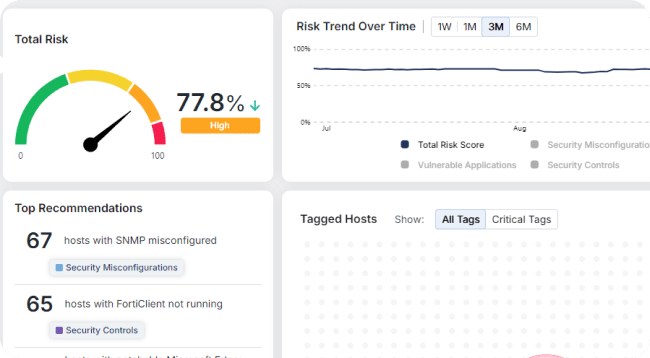Why Hedge Funds Need to Take Data Exfiltration as Seriously as Ransomware

In the high-stakes world of hedge funds and financial services, data security is more than just a technical concern—it’s a business imperative.
With billions of dollars in assets under management (AUM), sensitive client information, proprietary trading strategies, and regulatory compliance requirements, the financial services industry is a prime target for advanced cyberattacks. Among these threats, ransomware with data exfiltration has emerged as one of the most devastating.
The New Reality of Ransomware: It’s Not Just About Encryption Anymore
In the past, ransomware meant business disruption. Your systems were encrypted, operations ground to a halt, and a ransom demand arrived demanding payment for the decryption key.
Today, things are far more dangerous.
Modern ransomware attacks almost always involve data exfiltration—before the encryption ever begins. This tactic, known as double extortion, means attackers now hold a second, even more damaging card: the threat of leaking your most sensitive information if you refuse to pay.
And for hedge funds, that threat carries serious weight.
Why Hedge Funds Are Prime Targets
Hedge funds manage billions in capital and trade on proprietary models, market intelligence, and exclusive investor relationships. That kind of data—along with employee, LP, and deal information—is extremely attractive to threat actors.
Attackers know:
It’s no wonder ransomware gangs and nation-state groups are shifting their sights from big banks to mid-sized, high-value targets like hedge funds.
What the Regulators Are Watching
The U.S. Securities and Exchange Commission (SEC) and FINRA are increasingly focused on how financial institutions manage cybersecurity risks—including data exfiltration:
- Regulation S-P mandates firms safeguard customer data from unauthorized access or use.
- The SEC’s 2023 Cybersecurity Rules require disclosure of material incidents involving unauthorized data access or theft.
- FINRA’s cybersecurity guidance stresses the importance of data loss prevention, anomaly detection, and controls to stop data leakage—especially over cloud apps or command-and-control channels.
A ransomware attack that results in data exfiltration may not just hurt your reputation—it could also lead to regulatory investigations, fines, and mandatory disclosures.
Nevermind that the consequences of a data exfiltration attack on a hedge fund can be catastrophic:
- Regulatory Fines — GDPR fines for data breaches can reach up to 4% of annual global turnover, while SEC penalties can run into millions.
- Lost Trust — Leakage of client data or proprietary strategies can erode trust and lead to client withdrawals.
- Operational Disruption — Even if encryption is mitigated, exfiltration can paralyze operations due to incident response and recovery efforts.
- Legal Costs — Data breaches often result in lawsuits, further compounding financial losses.
- Overall Financial Losses — According to the IBM Cost of a Data Breach Report 2024, the average cost of a data breach in the financial industry was $6.94 million USD. This is $1.61 million higher than the cross-industry average.
For hedge funds, the stakes are even higher due to their unique data sensitivity.
Why Traditional Solutions Aren’t Enough
Detection-and-response tools like EDRs and SIEMs are essential but insufficient to address the growing threat of ransomware with exfiltration. Here’s why:
- Exfiltration Happens Early
- Attackers often exfiltrate data before encryption begins, making it difficult for traditional tools to detect and respond in time.
- Covert Techniques Evade Detection
- Sophisticated attackers use encrypted channels, DNS tunneling, and tools like Rclone to steal data without triggering traditional alerts.
- Alert Fatigue Overwhelms Teams
- Financial organizations often face false positives and excessive alerts from detection-focused solutions, delaying effective responses to real threats.
To truly safeguard your organization, you need a prevention-first approach that stops exfiltration attempts before they start. That’s where Morphisec excels.
How Morphisec Stops Data Exfiltration and Ransomware—Preemptively
Detection and response tools like EDRs and SIEMs are essential but insufficient to address the growing threat of ransomware with exfiltration. These technologies rely on detecting threats after they’ve already begun executing, which is often too late to prevent exfiltration or encryption.
Morphisec Takes a Prevention-First Approach
At the core of Morphisec’s Anti-Ransomware Assurance platform is Automated Moving Target Defense (AMTD)—a patented technology that creates a constantly morphing attack surface, stopping attackers from exploiting memory and launching malicious code.
With Morphisec’s Impact Protection for Exfiltration Prevention, hedge funds gain:
- Run-time protection that blocks exfiltration activity before data is transferred
- Defense against command-and-control communication and lateral movement
- Zero reliance on prior knowledge or threat signatures—so it blocks novel and evasive threats
- Preservation of business continuity—Morphisec stops attacks silently, without triggering downtime or alert fatigue
- No performance impact—even during trading hours
- 100% Ransomware-Free Guarantee—ensuring that your organization is fully protected against both encryption and exfiltration attacks
Whether attackers use stolen credentials, exploit a vulnerability, or evade EDR controls, Morphisec’s Anti-Ransomware Assurance intercepts their actions before damage is done.
It neutralizes advanced attacks in memory—including data theft—before exfiltration ever begins. It’s the missing layer hedge funds need to stay one step ahead.
The Bottom Line: You Can’t Recover What’s Already Stolen
Immutable backups are essential. But once data is exfiltrated, you can’t undo it. The best way to protect your investors, reputation, and regulatory standing is to prevent data theft from occurring in the first place.
Morphisec’s Exfiltration Prevention technology gives hedge funds a critical, last-mile layer of defense—silently hardening systems from within and giving attackers nowhere to hide.
Ready to Protect Your Firm from Data Exfiltration?
Stop ransomware. Stop exfiltration. Now and for good.
Learn how Morphisec prevents ransomware encryption and exfiltration in real time—without disrupting your operations. Book a demo today to see Morphisec in action.
Stay up-to-date
Get the latest resources, news, and threat research delivered to your inbox.





















